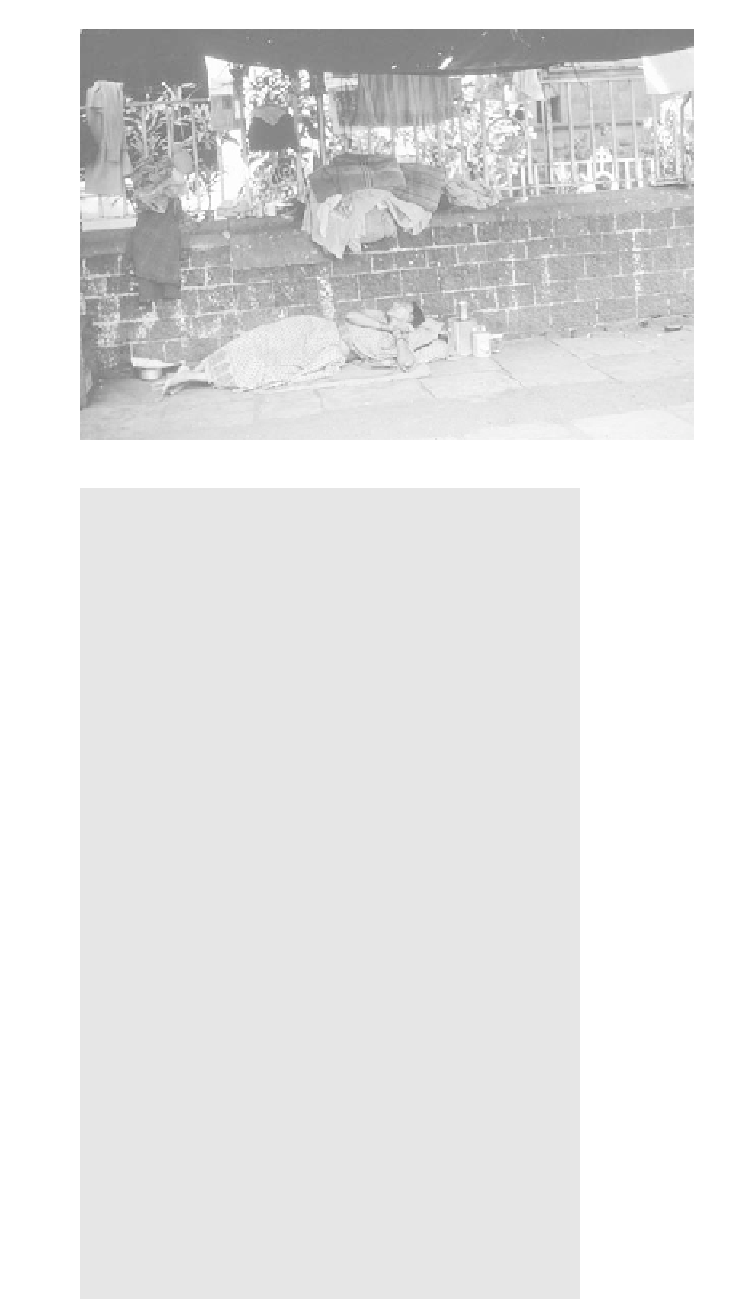Geography Reference
In-Depth Information
Figure 8-16
Homeless woman in Mumbai. Hundreds of thou-
sands of individuals and families live in the streets
of India' s major cities and towns. In Mumbai alone
there are at least 800,000.
Photograph courtesy of
B. A. Weightman.
Turning the Elephant into a Tiger
Mrs.Hiyale—the Rag-Picker
Indian politicians claim that they are turning India from
an elephant into a tiger. Old manufacturing regions are
burgeoning with industrial production and are expand-
ing to incorporate secondary cores (Figure 8-17). The
primary cores associated with Mumbai, Kolkata, and
Chennai (Madras) are products of historic inertia, but as-
sociated nodes such as Pune (a former hill station) and
Indore in the western industrial region are products of
the late twentieth and the twenty-first centuries.
In India, recycling provides a living for millions.
Most urban households keep all their “trash” such
as plastic bags and sell it to itinerant
kabiri-wallahs
who call at regular intervals. The rest of the garbage
is usually collected by men and boys and sorted
through by female “rag-pickers.” Once the “good
stuff” is removed the remainder goes to the dump
where even poorer women and children sort
through it again.
Mrs. Hiyale became a rag-picker 10 years ago
when a drought forced her and her family to abandon
their tiny plot of land in Mumbai' s rural hinterland.
They migrated to the city to find work. “Every day
was a bad day ,” she said. After a period of misery , she
came across a feminist charity that seeks to find jobs
for female rag-pickers. Now , she retrieves rubbish
from apartment blocks that have an arrangement
with the charity and sorts it in a shed where the
swarming flies and stench do not seem to bother her.
Everything is sorted and resorted by size, thick-
ness, weight and color: copper wiring, plastics,
paper, pieces of metal, cloth, leather, coconut shells,
and the like. Sorting is important because, for ex-
ample, envelopes fetch more money than a piece of
paper. Mrs. Hiyale is very thankful to have her job,
which brings in a regular income: about 150 rupees
a day (US$3.00), a very good wage for an informal
activity in India.
MUMBAI
Mumbai is the largest port on the Indian subcontinent
and handles about 25 percent of India' s foreign trade. It
also accounts for about 11 percent of India' s industrial
employment. Mumbai has recently become an impor-
tant center for the IT industry that includes research
and development as well as call centers. Its metropoli-
tan area contributes a staggering 38 percent of India' s
taxes.
Mumbai has the world' s largest movie industry , pro-
ducing more than 700 films a year. Made in
Bollywood
(Bombay/Hollywood) films are in Hindi and plots are
filled with music, dance, and clichés. Many are romance
stories but whatever the theme, good always overpowers
evil. Movies typically exhibit nine cultural elements—
love, hate, sorrow , disgust, joy , compassion, pity , pride,
and courage—as instructed by the ancient text
Naya
Shastra
(Science of Theater).



















Search WWH ::

Custom Search